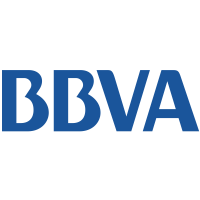Company Analysis Century Financial Corporation
1. Summary
Advantages
- Price (42.99 $) is less than fair price (43.84 $)
- Current debt level 1.07% is below 100% and has decreased over 5 years from 2.58%.
Disadvantages
- Dividends (3.2%) are below the sector average (6.7%).
- The stock's return over the last year (28.87%) is lower than the sector average (43.26%).
- The company's current efficiency (ROE=16.81%) is lower than the sector average (ROE=131.98%)
Similar companies
2. Share price and performance
2.1. Share price
2.3. Market efficiency
| Century Financial Corporation | Financials | Index | |
|---|---|---|---|
| 7 days | -1.2% | 39.7% | 1.6% |
| 90 days | -2.1% | 41.5% | 23% |
| 1 year | 28.9% | 43.3% | 13% |
CYFL vs Sector: Century Financial Corporation has significantly underperformed the "Financials" sector by -14.39% over the past year.
CYFL vs Market: Century Financial Corporation has outperformed the market by 15.83% over the past year.
Stable price: CYFL is not significantly more volatile than the rest of the market on "OTC" over the last 3 months, with typical variations of +/- 5% per week.
Long period: CYFL with weekly volatility of 0.5551% over the past year.
3. Summary of the report
4. Fundamental Analysis
4.1. Stock price and price forecast
Below fair price: The current price (42.99 $) is lower than the fair price (43.84 $).
Price not significantly lower than the fair price: The current price (42.99 $) is slightly lower than the fair price by 2%.
4.2. P/E
P/E vs Sector: The company's P/E (7.1) is lower than that of the sector as a whole (19.24).
P/E vs Market: The company's P/E (7.1) is lower than that of the market as a whole (59.87).
4.2.1 P/E Similar companies
4.3. P/BV
P/BV vs Sector: The company's P/BV (1.12) is lower than that of the sector as a whole (1.73).
P/BV vs Market: The company's P/BV (1.12) is lower than that of the market as a whole (3.17).
4.3.1 P/BV Similar companies
4.4. P/S
P/S vs Sector: The company's P/S indicator (2.58) is lower than that of the sector as a whole (3.2).
P/S vs Market: The company's P/S indicator (2.58) is lower than that of the market as a whole (3.43).
4.4.1 P/S Similar companies
4.5. EV/Ebitda
EV/Ebitda vs Sector: The company's EV/Ebitda (-67.33) is lower than that of the sector as a whole (120.44).
EV/Ebitda vs Market: The company's EV/Ebitda (-67.33) is lower than that of the market as a whole (40.12).
5. Profitability
5.1. Profitability and revenue
5.2. Earnings per share - EPS
5.3. Past profitability Net Income
Yield Trend: Rising and has grown by 15.31% over the last 5 years.
Earnings Slowdown: The last year's return (0%) is below the 5-year average return (15.31%).
Profitability vs Sector: The return for the last year (0%) exceeds the return for the sector (-6.77%).
5.4. ROE
ROE vs Sector: The company's ROE (16.81%) is lower than that of the sector as a whole (131.98%).
ROE vs Market: The company's ROE (16.81%) is lower than that of the market as a whole (41.73%).
5.5. ROA
ROA vs Sector: The company's ROA (1.91%) is lower than that of the sector as a whole (118.36%).
ROA vs Market: The company's ROA (1.91%) is lower than that of the market as a whole (29.55%).
5.6. ROIC
ROIC vs Sector: The company's ROIC (0%) is lower than that of the sector as a whole (8.29%).
ROIC vs Market: The company's ROIC (0%) is lower than that of the market as a whole (10.99%).
7. Dividends
7.1. Dividend yield vs Market
Low yield: The dividend yield of the company 3.2% is below the average for the sector '6.7%.
7.2. Stability and increase in payments
Dividend stability: The company's dividend yield 3.2% has been steadily paid over the past 7 years, DSI=0.93.
Weak dividend growth: The company's dividend yield 3.2% has been growing weakly or stagnant over the past 5 years. Growth over only 3 years.
7.3. Payout percentage
Dividend Coverage: Current payments from income (24.02%) are at an uncomfortable level.
Pay for your subscription
More functionality and data for company and portfolio analysis is available by subscription
 Max Chat
Max Chat
